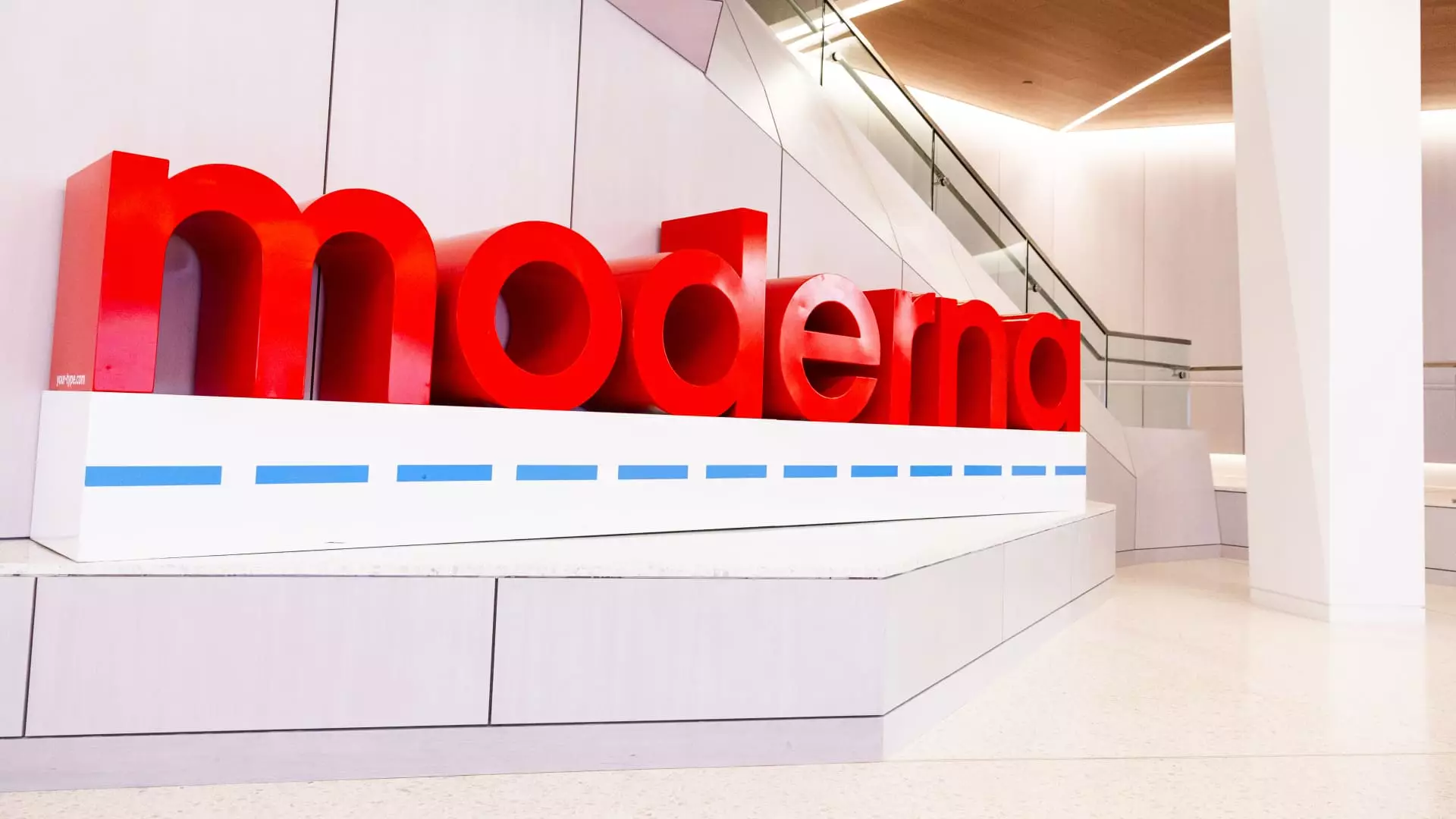Moderna, the biotechnology innovator, has showcased a surprising turnaround in its financial fortunes as it reported a profit for the third quarter, a stark contrast to the staggering losses it faced in the same period last year. This surprising development not only exceeds Wall Street forecasts but also suggests a strategic realignment as the company grapples with a post-pandemic era marked by declining COVID-19 vaccine demands.
The company’s latest earnings report reveals a net income of $13 million, or 3 cents per share, a significant rebound from the whopping net loss of $3.63 billion, or $9.53 per share, recorded in the corresponding quarter of the previous year. This dramatic shift highlights the effectiveness of Moderna’s aggressive cost-cutting measures, which are aimed at streamlining operations amidst the diminishing revenue from its once crown-jewel COVID-19 vaccines. In a proactive response to an evolving market landscape, Moderna has set a budgetary target to realize $1.1 billion in savings by 2027—a clear indication of its intent to adapt and innovate amidst uncertainty.
One of the key components contributing to Moderna’s financial success this quarter is the launch of its respiratory syncytial virus (RSV) vaccine, which has become the company’s second commercially available product. The approval of the RSV vaccine came earlier in the year, paving the way for its market introduction. Moderna’s plans for expansion are ambitious; it intends to seek expanded approval for the RSV shot, specifically targeting high-risk adults aged 18 to 59, before the year concludes.
Moreover, the company is gearing up to file for approval of an advanced COVID-19 vaccine formula that combines protection against COVID-19 and influenza, positioning itself to reinvigorate its flagship vaccination line. The proactive stance adopted by Moderna in launching these products early enables it to effectively meet emerging demand, reflected in the positive sales numbers.
Moderna’s Q3 revenue climbed to $1.86 billion, a modest increase from the previous year. This revenue largely stemmed from its COVID-19 vaccine sales, with approximately $1.2 billion generated in the U.S. alone, and an additional $600 million from international markets. The RSV vaccine, which contributed $10 million in U.S. sales, fell short of expectations. Analysts previously forecasted sales of $132 million, indicating a potential disconnect between market demand and distribution strategies, likely due to its late approval for the season.
Despite these challenges, the broader outlook remains cautiously optimistic, with Moderna reiterating its annual product sales guidance of approximately $3 billion to $3.5 billion for 2024. However, the company has previously adjusted this forecast amidst concerns over sales in Europe and an evolving competitive landscape within the respiratory vaccine sector in the U.S.
Moderna’s stock has experienced a volatile year, shedding nearly 50% of its value as investors speculate on the long-term viability of its COVID-19 business model. The company’s leadership is acutely aware of the stakes at hand and is focusing on a robust pipeline built around its messenger RNA technology, which has proven effective for both its COVID and RSV vaccines. With an eye toward the future, Moderna has 45 products currently in development, aiming to introduce 10 new offerings over the next three years.
Particularly noteworthy is Moderna’s commitment to diversifying its portfolio; it is working on several innovative treatments, such as a standalone flu vaccine and a personalized cancer vaccine in collaboration with Merck. These initiatives underline the company’s strategy to mitigate dependency on the COVID-19 vaccine, thereby securing its position in a competitive biopharmaceutical landscape.
Examination of cost structures reveals that Moderna has successfully reduced its costs significantly. The cost of sales for Q3 dipped by 77% year-over-year to $514 million—indicative of efficient inventory management, including significant write-downs of unused COVID-19 doses.
Furthermore, research and development expenses decreased marginally, highlighting a transition towards streamlined clinical development roles. Moderna’s efforts to tighten selling, general, and administrative expenses have also yielded significant results, with a 36% reduction year-over-year.
Overall, as Moderna navigates a rapidly changing healthcare environment, its recent profit highlights a potentially transformative moment. The company is not just reacting to the constraints of a post-COVID world; it is strategically positioning itself for sustainable growth through innovation and financial prudence. Whether these measures will bear long-term fruit remains to be seen, but for now, the biotech giant stands as a testament to resilience and adaptability.

